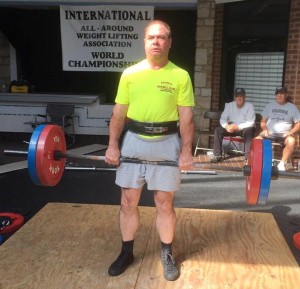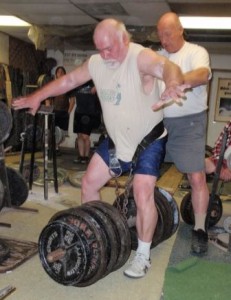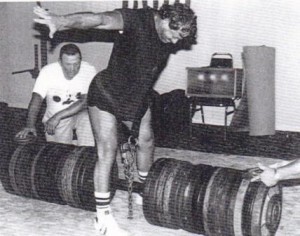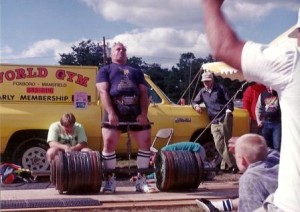Joint Health Silliness
New Information on Glucosamine and Chondroitin
By Dan Wagman, Ph.D., CSCS
Back in October 2013 my publication’s Journal of Pure Power e-Newsletter provided a review of the effects of glucosamine and chondroitin (G&C) in athletes. This, because these two supplements are said to not only heal joint pain and osteoarthritis, but to even save your joints from the supposed damage coming from training and competition (that training and competition is unhealthy for your joints is an utterly absurd proposition). Our e-Newsletter used cold, hard science to debunk these beliefs but I recently had occasion to see what the latest research on the topic reveals.
Background
Glucosamine and chondroitin are compounds that your body produces naturally. Both substances are the principal substrates in the biosynthesis of cartilage, the connective tissue between your joints (though it’s found elsewhere in the body, too). The thinking is that if you supplement with G&C, then you end up with more of it, thus being able to rebuild damaged cartilage more effectively. Alternatively, supplementation in healthy people is presumed to act as a prophylactic so that the stresses from training and competition won’t even get to the point of being able to damage your joints.
Fact Check
Since we published our G&C review nearly five years ago, a lot of additional research has been conducted. What this has allowed scientists to do is conduct review studies. Look at that as studies on the studies in order to come up with a coherent bottom line. One of the things I learned is that the supplement companies have done a fantastic job of reaching out; G&C annual sales have hit $8.33 billion. As one study stated, “It appears that careless, uninformed, and scientifically inaccurate analysis of the evidence base may still occur…” A different study clarified by stating that “the safety and efficacy of supplements remain unclear and are often clouded by misinformation in mainstream media.”
One of the most recent reviews conducted a detailed mathematical analysis of the actual effects of G&C compared to the placebo effect. Here’s what they found:
In terms of improving pain, in the short-term G&C’s effects fell right between favoring the supplement and favoring placebo; in the medium-term G favored placebo and C fell right between favoring the supplement and placebo; in the long-term both G&C’s effects fell right between favoring the supplement and placebo. When it came to improving physical function, in the short-term G&C effects favored the supplement; in medium-term G favored placebo and C fell between favoring placebo and the supplement; same for long-term. With findings like that, how could anyone have any confidence in these supplements?
But there’s another issue at play, that of G&C formulations. You see, there are a lot of different formulations out there and thus it becomes very difficult to ascertain what’s what. Therefore, a different review looked at the type of G&C and their effects. This study found that only patented crystalline glucosamine sulfate was able to deliver consistently high G bioavailability. Similarly, only pharmaceutical-grade C showed any effects worth noting. These findings, however, were only related to osteoarthritis. If you don’t have that condition, supplementation with G&C remains suspect if not outright foolish.
A study coming out of the field of veterinary medicine drew some interesting conclusions that I feel apply to human consumption of G&C, too. Here, the researchers from the College of Veterinary Medicine at the University of Minnesota gave 60 dogs with osteoarthritis G&C or a placebo for 97 days. The scientists learned that G&C held no benefits for the dogs. However, despite these irrefutable findings, the dogs’ owners felt that their animals improved throughout the study period, and this for the dogs that received the supplements and those that received the placebo. To the research team this meant that there was a placebo effect even in the dog owners.
Save Your Joints…er…Wallet
The proverbial bottom line is that you can’t expect G&C to be of much benefit to your joints. And if you’ve been supplementing with it and you think it’s helping, consider the very true and measurable effect called placebo. Be smart about the fact that human nature is such that it sometimes sees an effect that’s nonexistent. The supplement industry knows this and exploits it to the tune of $8.33 billion for G&C alone. Don’t allow yourself to be duped and defrauded.
- Bruyère, O., et al. Inappropriate claims from non-equivalent medications in osteoarthritis: A position paper endorsed by the European Society for Clinical and Economic Aspects of Osteoporosis, Osteoarthritis and Musculoskeletal Diseases (ESCEO). Aging Clin Exp Res. 2018;30:111–117.
- Liu, X., et al. Dietary supplements for treating osteoarthritis: A systematic review and meta-analysis. Br J Sports Med. 2018;52:167–175.
- Scott, R., et al. Efficacy of an oral nutraceutical for the treatment of canine osteoarthritis. Vet Comp Orthop Traumatol. 2017;5:318-323.



